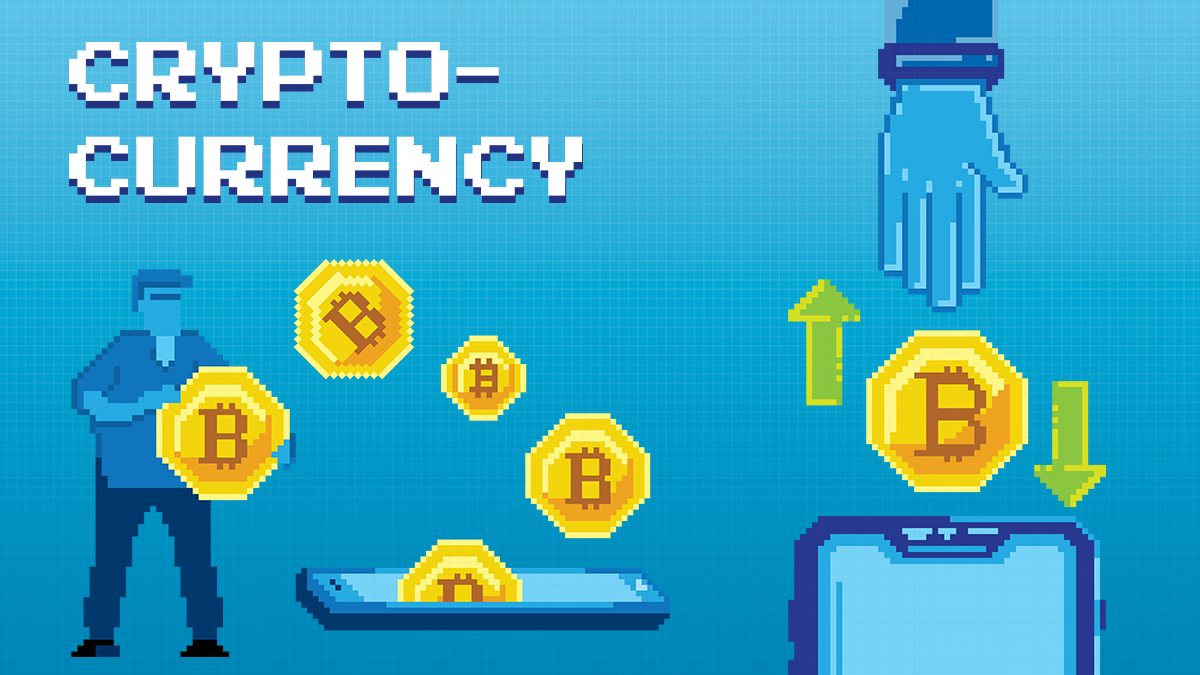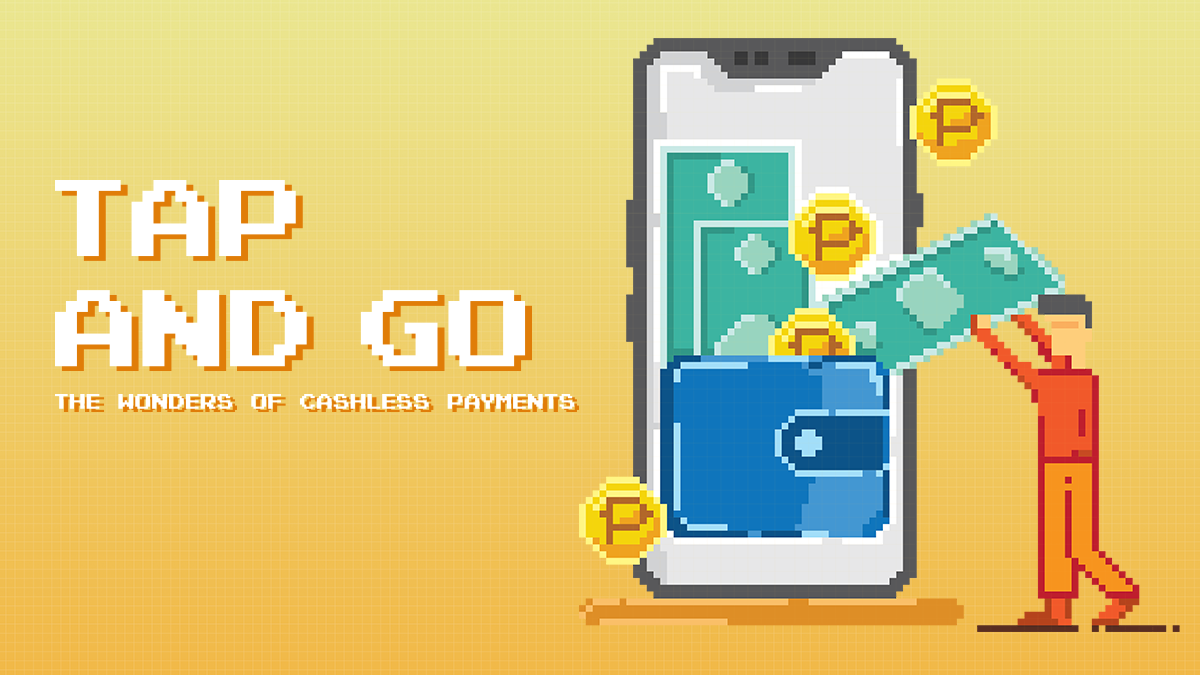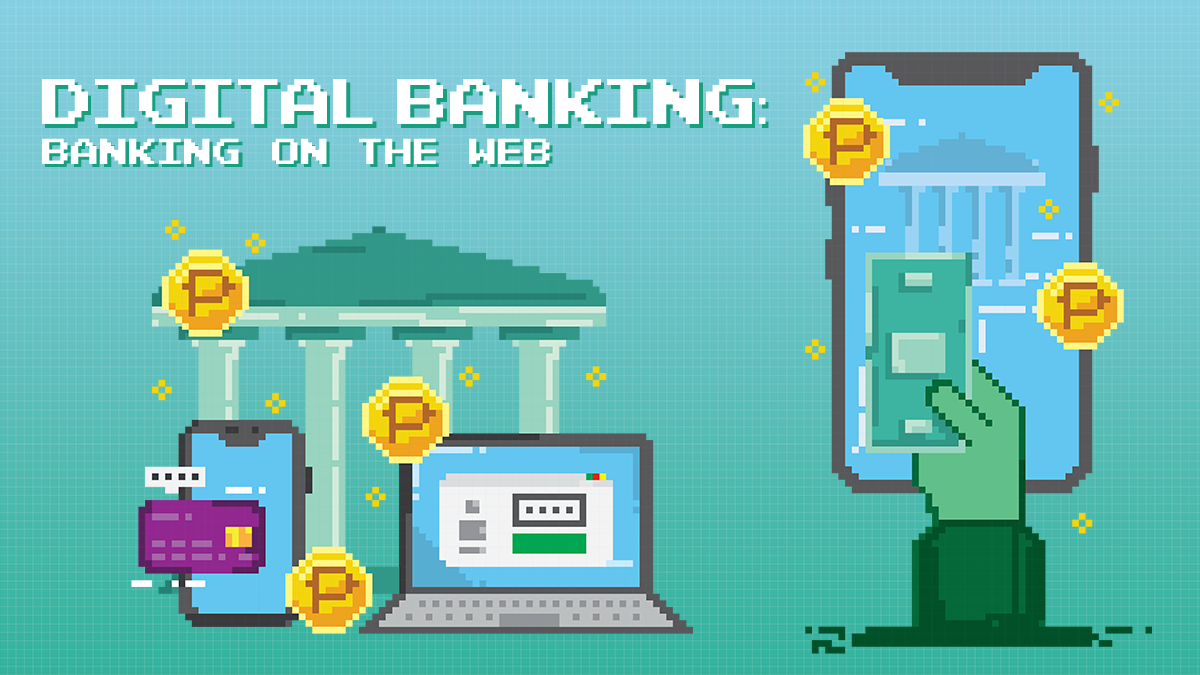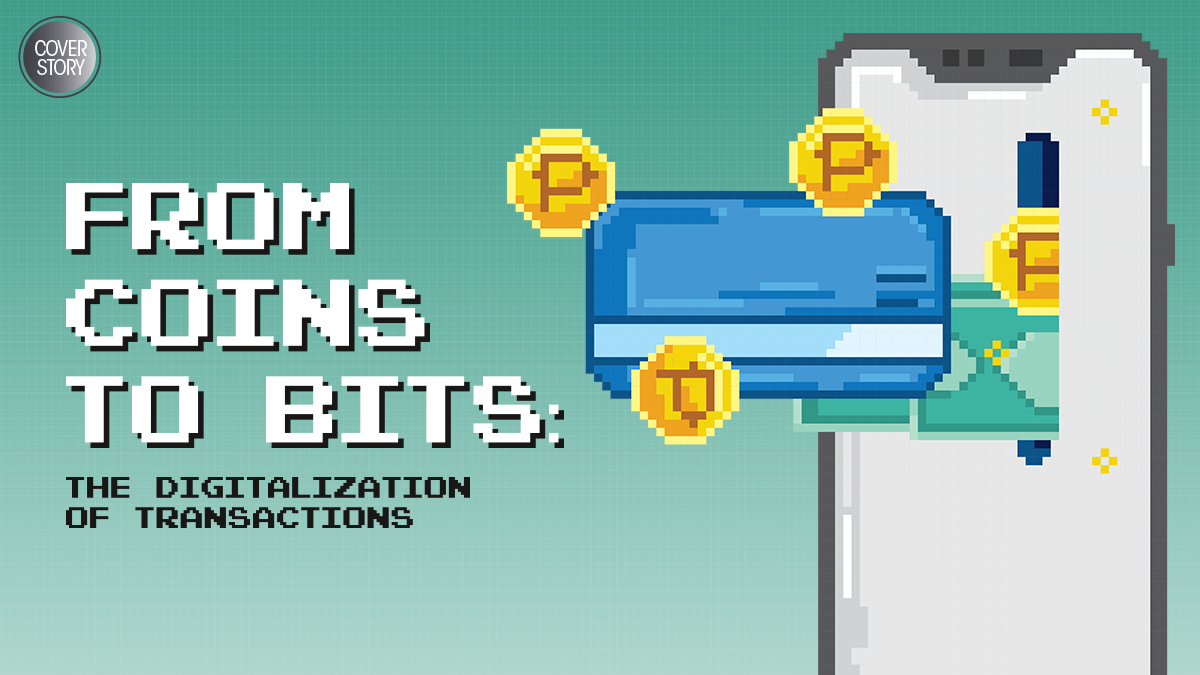Money is an important part of how the world works. Whether it’s to buy lunch, a car, or a house, money makes the whole business of buying and selling much simpler. As technology progresses though, more and more methods of exchange have come into existence. In this month’s CoverStory, we look at some of the newer ways the world can go ‘round.

CRYPTO-CURRENCY
In a previous CoverStory, we discussed just how blockchain works. The technology, which is a decentralized, secure, anonymous way to keep reliable records, isn’t the same as cryptocurrency, but it is an application of blockchain. If you want to know how blockchain works in general, find a copy of the February 2019 issue, and give that a look. Today though, we’re going to take a look at cryptocurrency in particular.
Cryptocurrency is the most visible, best-known application of blockchain technology. If you’ve ever heard of Bitcoin, Etherium, or Litecoin, then we’re on the same page. The explanation is cryptocurrencies are internet- based forms of currency that use blockchain technology. The benefits of blockchain, basically that it’s decentralized, open, and virtually impossible to tamper with, make it great as a means of paying for goods and services, particularly if you want to do it discreetly.
What’s the point though?
There are advantages to using Bitcoin over traditional means of exchange, with most of the advantages being innately due to their being blockchain-based, so if you’re interested to look at what those are, refer to that previous issue we mentioned. As a financial tool though, there are a few marked advantages over traditional currency.
Speed
As an application of blockchain, the execution of funds transfers is practically instant across the system. Everyone is working on it at the same time, you don’t have to wait for banking hours to process, verify, and apply the changes.
No single entity holds the keys
Again, as a consequence of being decentralized, it’s not tied to a particular state or entity. There is no foreign exchange to deal with, and it’s not tied to any one state’s gold reserves. In fact, there really is only a certain amount of Bitcoin that can be mined. It’s also immune from the political tides that make currencies volatile (though yes, it is itself volatile because it’s so new.) This also gives it absolute security. There’s no one ledger where amounts are held, and unless you can change the records on more than half of everyone making changes to the public ledger, you can’t change the numbers.
Permanence
Once a transaction goes through, is logged, and propagated, there’s no going back. Nothing, nobody, anywhere can reverse it. That’s just how blockchain works. If any amount of cryptocurrency goes anywhere, whether intentionally, or by theft, there’s no calling a bank and saying “wait, i’ve been robbed,” there’s no “oops,” there’s just cryptocurrency that’s no longer where it used to be. This is good and bad, as it avoids double spending (something like issuing a check from an account with no funds), but can also be disastrous, for obvious reasons.
It’s totally anonymous
Yes, you can trace where the money goes, but there’s just no real way to see who is connected to what address. These addresses, the closest analogue is to an account, exists on its own, and again, since there is no central table that holds real-world information against a list of these addresses, there’s no way to trace who really owns what. This is obviously good and bad, depending on the application, and plenty of ne’er-do-wells rely on this property of cryptocurrencies to run their scams. Add to this increasing global acceptance, and you have a recipe for a very convenient way to do business whether clean or otherwise.
What does it all mean?
There are a lot of highly technical, very academic papers on the impact of the existence of cryptocurrencies, their impact on trade, and their use, but at the end of the day, it’s a thing that exists now, and it’s challenging how we view money and finances. Things are going to change over the next few years as interest grows, and more people dabble in cryptocurrency, but it does seem that cryptocurrencies are here to stay. Unless someone finds a way to break the system, or some advancement in computing makes mining a lot easier than it is now, cryptocurrencies are here and they’re holding fast, whether we understand it or not.

TAP AND GO: THE WONDERS OF CASHLESS PAYMENT
It was 2007 and my 12-year-old self was watching Disney’s sci-fi classic Meet the Robinsons. A few years later, almost everything that was shown in the movie has become true: robots aiding people on a daily basis, smart appliances that work with various sensors, and animated billboards. There’s one concept though that it didn’t foresee and it has been revolutionizing consumer and business transactions. Whether it comes in the form of RFID tags, or mobile apps, the traction of cashless payments have been growing through the years and have been appealing to both young and old.
The birth of cashless payments
Around 2010, the convenience of online shopping was starting to get a foothold in the Philippines. At that time, only those who had credit or debit cards could enjoy the perks. However, a large number of Filipinos were still reluctant to put their debit and credit card information online. Phishing scams and website hacking were commonplace even then, which make online shopping websites such as Lazada and Shopee a hard sell. To address this issue, financial services and even the telcos started to develop e-wallets: virtual wallets that store payment information in a user account. This allows users to do more than accomplishing online purchases which we’ll discuss later.
E-wallets vs. digital banking
Cashless payment, by definition, does not involve the actual exchange of cash. However, there’s a fine line between mobile wallets and digital banking. The former can store credit and debit card value, while the latter is a mobile platform that allows users to view their balance and monitor transactions in their own bank accounts and transfer funds to other bank accounts. To simply put, e-wallets can be funded with money from either the account holder’s existing bank account via digital banking, over the counter reloading, or by going to your mobile wallets’ remittance partners.
Applications and types of e-wallets
Should you be looking for an alternative, these virtual wallets grant in-store purchases of goods and services like groceries, quick-services restaurants, and other partner merchants either by tapping an RFID card on the physical store’s terminals or by scanning the store’s corresponding QR code from its mobile app.
E-wallets usually have exclusive coupons, loyalty credits, or cash back promos to the users as rewards for completing transactions. Members can also pay utility, postpaid, and credit card bills; prepaid loads, loans, airline tickets, insurance, loans, tuition fee, government fees, and HMOs without lining up in a physical payment center. The cash-in, fund transfers, and payment features usually reflect real-time in the system’s servers which makes it more convenient for busy bees.
Locally, there are four major mobile wallets available in the country. Each of which differs by their usage and the openness of the accounts. There are closed wallets which only offer exclusive purchases at specific establishments, semi-closed wallets for registered merchant stores, and open wallets that are accepted by any merchant with a credit card terminal.
To get more points and discounts from GrabCar rides, GrabFood orders, and GrabExpress deliveries, there’s GrabPay. What’s special is that the account can be used across Southeast Asia at low exchange rates by getting a GrabPay Card powered by Mastercard. However, its partners are still very limited. For frequent LRT and MRT commuters, there’s Coins.PH that permits reloading of Beep cards via NFC from smartphones and allows the purchase of digital currency. Unlike its competitors, Coins.PH grants its users the ability to buy and sell Bitcoin, XRP, Ethereum, and other cryptocurrencies, and even withdraw cardless via Security Bank ATMs. The only downside is the exchange rate from cryptocurrency to peso may vary from international rates because of the fixed exchange rate of the mobile wallet. GCash and PayMaya, while both considered rivals in the e-wallet industry, boast common features of e-wallets with a few perks. Globe Telecom’s GCash enables account holders to open their own savings account with CIMB, invest money, donate a tree via GCash Forest, book movies through GMovies, buy game credits, and topping up and borrowing prepaid load. PLDT’s PayMaya, on the other hand, gives online shopaholics a virtual Mastercard that they can use for online shopping upon activation of the e-wallet, cash backs from partner merchants, and up to a 5 percent rebate from load purchases. Both give consumers the purchasing power by QR Code scanning in their respective partner establishments.
The future of e-wallets
According to the latest Financial Inclusion released by Bangko Sentral ng Pilipinas, the e-wallet account penetration in the Philippines has increased over the years jumping by 22 percent to 33 million in 2018. This has surpassed the record of credit card holders. For every 100 Filipinos, there are 31 e-wallet accounts as compared to nine credit cards per 100 individuals in the fourth quarter of 2018. Based on the 2019 Consumer Brand Study of PayMaya, the financial services arm of PLDT’s Voyager Innovations, the inflation rate for the demand of e-wallets are due to the convenience of opening an account, absence of fees, and easy Add Money features which garnered 60 percent, 54 percent, and 36 percent respectively. This only strengthens how e-wallets change the game of the fintech industry.
Now more than ever, people from all walks of life are being encouraged to open conventional accounts through e-wallets. This enables people to manage and control their finances. And with the current spending trend of consumers, it’s a no-brainer that everyone will go cashless a few years from now.

DIGITAL BANKING
In the late 1960s, Automatic Teller Machines (ATM) were invented to cater to the growing needs of extremely busy businessmen. The arrival of these ATMs also heralded a new form of banking, one that is customers first and extremely time-efficient.
After the ATM, the proliferation of broadband internet to commercial establishments in the 1980s started the digital revolution in banking sparking the digital banking rush. And as the Internet became readily available in most homes, so does the need for a more efficient banking method to reach more tech-savvy clients.
What is digital banking?
When we say digital banking, it means the digitalization of banks or moving most of the bank’s resources online. Most of the country’s large banks already have their digital platforms to cater to the needs of their customers.
Digital banking initially offered simple features such as balance inquiry and money transfers, but developments in technology have added new features to banks’ online platforms.
New technologies in digital banking
Digital banking is now better than ever, thanks to improved and accessible technology. As digital banks increase security, customers can rest assured that their money remains secure. Another neat feature banks are slowly offering is fund investments as they partner with the Philippine Stock Exchange. And in the consumer front, banks are now using smartphones for further convenience, an example of this is cheque deposits using your phone’s camera.
As technologies evolve, so does banking. In recent years, “blockchain” has been floated around as the next big thing for online banking. In simple terms, blockchain is the next generation of secure transactions via the Internet. With its promise of anonymity, blockchain might be the next big step in securing user’s privacy. Speaking of privacy, digital banking is also taking steps in ensuring customers’ security especially of their sensitive information from the threats that might haunt them.
The new risks from digitalization
With the rise of digitalization, there also come new risks in banking. Prior to digitalization, a major threat to any depositor is physical theft. With digitalization, criminals have found a new dimension in which to conduct their crimes. Cybercrimes have become rampant especially towards online banking with cybercriminals constantly upgrading their arsenal to get your money.
Phishing is one such tactic cybercriminals use to get your information from right under your nose. Phishing is the method of extracting a person’s personal information through fraudulent means. Examples of these are fake websites that ask for your sensitive information. Another example is cyberattacks on banks that target bank systems. If a bank has an unsecured system you can expect hackers to infiltrate it and gather sensitive data.
Not all is bleak; cybersecurity is also priory for most digital bank systems, with innovations constantly coming in.
The rise of all-digital banks
With the rapid growth of the Internet, it is no surprise that most establishments, banking included, sought to harness its full potential. Globally, banks have started focusing their efforts on their online platforms adding features after features to fully embrace the digital world. The goal is to create a banking experience that can be done in the safety of your home and at the most convenient time.
In 2018, the first all-digital bank was launched in the country. November of that year saw European banking firm ING launch their fully digital bank with their app being its gateway. In December of that year, CIMB also launched its fully digital bank to further their growth, CIMB partnered with e-wallet GCash to launch its saving feature. Lastly this coming year, Tonik, a fintech startup, will open its digital bank in the country.
Digital banks offer everything a normal brick-and-mortar bank could. They offer saving accounts with deposit and withdrawal using your e-wallets. These banks also offer loan services provided that they have fully verified the loaner.
All-digital banks are the gateway to a fully cashless future. With the rise of e-commerce and fully online transactions, digital banks seem like the way to go.
Words by the Gadgets Team | Artwork by Jezeil Romero
Also published in GADGETS MAGAZINE March 2020 issue
